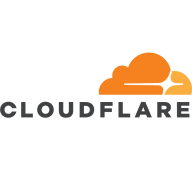


Amazon CloudFront and Azure Front Door compete in the content delivery network market. CloudFront has an edge in AWS environments, while Azure Front Door offers advanced routing for Azure-centric setups.
Features: CloudFront provides superior AWS integration, low-latency global delivery, and strong security with DDoS protection and WAF integration. Azure Front Door offers advanced traffic management, bot protection, and detailed analytics, along with efficient routing.
Room for Improvement: CloudFront could improve by adjusting its pricing, expanding global PoP locations, and enhancing its UI and caching. Azure Front Door requires better product clarity across services, improved DDoS protection, and more detailed documentation.
Ease of Deployment and Customer Service: Both CloudFront and Azure Front Door offer public cloud deployment, with CloudFront supporting hybrid and private environments. CloudFront's customer service is generally effective despite some delays, while Azure Front Door benefits from Microsoft's established and reliable support channels.
Pricing and ROI: CloudFront's pay-as-you-go model is perceived as high but offers beneficial ROI through cost-effective delivery and savings on server maintenance. Azure Front Door has a flexible pricing model with various tiers, matching its advanced features, and offers significant ROI through scalability.
WordPress security can be tricky, and that's where Cloudflare can be absolutely helpful for small businesses.
For the small project I was working on, using the basic tier provided a huge improvement at zero cost.
In terms of return on investment with Cloudflare, it costs my time to set them up, but basically once they're set up, it's done.
Azure Front Door offers a quick return on investment once it is set up.
This would help us address issues promptly, especially during unforeseen events like DDoS attacks.
Cloudflare does not offer hands-on technical support to fix customer problems but rather a self-service model.
The key factor is the language in which the support is offered, which, in this case, is in Thai.
I am able to set up a critical call with Microsoft, and they respond quickly to tickets with the highest severity.
It is a SaaS tool, but the fact that they have workloads deployed across the world proves that it is a highly scalable tool.
The tool offers very good performance, even during high-traffic periods.
I rate the solution’s scalability an eight out of ten.
I find that Front Door can become expensive for large-scale projects with more transactions and users.
I consider the scalability of Azure Front Door to be strong.
For DDoS protection, I would not recommend Cloudflare.
I rate the solution’s stability an eight out of ten.
The service is very stable with no impacts during high-traffic periods.
If Amazon CloudFront is present, it will decrease latency; if it is not, then latency would be slightly greater, but it would still work.
I rate Azure Front Door's stability a nine because it is easy to make updates through Azure Portal.
There's a need for improvement in areas like AI-based DDoS attacks and Layer 7 WAF features.
Despite these challenges, overall, Cloudflare remains the preferred solution compared to Azure, AWS CloudFront, and Google Cloud Armor.
The timing aspect can lead to it being considered overpriced. This is a particular concern we have with Cloudflare, as they may struggle with accurately detecting the client.
The pricing for Amazon CloudFront is quite expensive; I would rate it six if we use all edges.
If I could use Azure Front Door with private IP addresses, it would be more beneficial.
It relies on the WAF module where users must configure rate-limiting rules, as it does not automatically sense malicious spikes in traffic.
The only significant adjustment required is with URL set parameters that need to be passed for an existing domain.
That's where Cloudflare shines for smaller businesses – it's ten times cheaper than Akamai.
I find it to be cheap.
I think they should consider reevaluating the pricing for support, as it can be quite high.
Azure Front Door is cheaper for small projects, companies, or applications compared to using separate tools.
The most valuable features of the solution are performance and security.
Techniques like minification and image compression reduce the size of assets, leading to better performance and faster user load times.
The solution has been able to compare it to the market, and I think the product has taken great strides in automating quite a bit of things, and they use a lot of AI.
It drastically reduces latency, which is very useful for web performance and user experience.
Azure Front Door provides DDoS protection and features related to WAF.
Azure Front Door includes a built-in web application firewall, which performs signature-based checks of the request payload, offering protection against common attacks or malicious requests.
| Product | Market Share (%) |
|---|---|
| Cloudflare | 21.1% |
| Azure Front Door | 15.3% |
| Amazon CloudFront | 7.0% |
| Other | 56.599999999999994% |



| Company Size | Count |
|---|---|
| Small Business | 46 |
| Midsize Enterprise | 8 |
| Large Enterprise | 25 |
| Company Size | Count |
|---|---|
| Small Business | 21 |
| Midsize Enterprise | 4 |
| Large Enterprise | 15 |
| Company Size | Count |
|---|---|
| Small Business | 9 |
| Midsize Enterprise | 1 |
| Large Enterprise | 9 |
Cloudflare is a highly-regarded Content Delivery Network (CDN) and a Distributed Denial-of-Service (DDoS) protection solution. The robust global connectivity cloud platform that is Cloudflare ensures users are able to connect to the Internet quickly, securely, and reliably. Cloudflare is one of the world's largest networks in the marketplace today. Using Cloudflare, businesses, educational entities, NGOs, vloggers, bloggers, and anyone else with an internet presence can experience more secure, faster websites and applications.
Currently, there are millions of Internet locations on Cloudflare, and the Cloudflare network
continues to grow every day by the thousands. The solution is able to fulfill the requests for
millions of websites seamlessly and serves on average 45 million HTTP requests per second.
Cloudflare has safe, secure data centers in close to 300 cities worldwide to ensure every
client request is filled as quickly as possible. It is Cloudflare’s edge network that makes this
possible by keeping content and other services as close to each client as possible, so the
information requests are always only seconds away.
Many organizations that work in democracy, civil society, human rights, or the arts are able to
access Cloudflare's highest levels of protection for free via Project Galileo. Additionally, official
election websites can be secured from hacking and fraud through Cloudflare’s Project
Athenian, also at no additional cost.
Cloudflare can also help organizations of all sizes develop a robust zero-trust strategy to
ensure the highest levels of productivity and profitability. Employees, stakeholders, and end users have a greater level of satisfaction and overall improved user experience, which can, in
turn, result in higher revenues and overall ROI. Zero-trust and BYOD (bring your own device)
access ensure end users and employees always have the best resources and technology
available to them at all times.
Cloudflare benefits
Cloudflare has many benefits. Some of its most valuable benefits include:
- Faster load times
- Robust DNS security
- Intuitive cloud Web Application Firewall (WAF)
- Free universal SSL
- Image enhancement
- Automatic browser caching
- Next-generation cloud load balancer
- Accelerated Mobile Pages (AMP)
- Rate limiting
- Minification
- Zero-trust capabilities
- Cost-effective
- Reduced carbon footprint
Reviews from real users
“Many websites require an SSL certificate because they sell stuff and want SSL. Cloudflare
comes with an SSL certificate built in. It's automatic. You sign yourself up for Cloudflare, and
an SSL certificate automatically protects your website. If you have a connection between your
website and your host, the server, Cloudflare, and the host, you don't necessarily need a
certificate.” Spencer M., Owner at Tech Exchange
“What I like best about Cloudflare is that my company can use it to trace and manage
applications and monitor traffic. The solution tells you if there's a spike in traffic. Cloudflare
also sends you a link to check your equipment and deployment and track it through peering,
so it's a valuable tool.” Daniel P., Network Engineer at Ufinet
“The most valuable feature of Cloudflare is the GUI. You are able to control the solution very
well through the interface. There is a lot of functionality that is embedded in the service.” PeerSpot user, Competence Center Manager at a tech services company
Amazon CloudFront is a global content delivery network (CDN) service that accelerates delivery of your websites, APIs, video content or other web assets. It integrates with other Amazon Web Services products to give developers and businesses an easy way to accelerate content to end users with no minimum usage commitments. Amazon CloudFront can be used to deliver your entire website, including dynamic, static, streaming, and interactive content using a global network of edge locations. Requests for your content are automatically routed to the nearest edge location, so content is delivered with the best possible performance. Amazon CloudFront is optimized to work with other Amazon Web Services, like Amazon Simple Storage Service (Amazon S3), Amazon Elastic Compute Cloud (Amazon EC2), Amazon Elastic Load Balancing, and Amazon Route 53. Amazon CloudFront also works seamlessly with any non-AWS origin server, which stores the original, definitive versions of your files. Like other Amazon Web Services products, there are no long-term contracts or minimum monthly usage commitments for using Amazon CloudFront – you pay only for as much or as little content as you actually deliver through the content delivery service.
Azure Front Door enhances web application performance and security by leveraging traffic inspection, SSL offloading, and a web application firewall. It enables intelligent routing, load balancing, and global resource deployment while providing essential features for online application security.
Azure Front Door integrates GitOps for seamless deployment, offering significant capabilities in giant networks like CDN functionalities and DDoS protection. Its advanced configurations include traffic analytics and transit layer security. Despite its affordability and scalability, users see room for improvement in global load balancing and private IP address support, citing integration challenges with other cloud vendors. The interface may appear complex, and some users desire more transparent pricing, better DDoS defenses, and enhanced monitoring. This platform is especially beneficial for securing external traffic and optimizing content delivery, providing DNS integration and disaster recovery mechanisms.
What are the key features of Azure Front Door?In industries focusing on online presence and global user engagement, Azure Front Door is invaluable for optimizing web application performance. E-commerce platforms deploy it to secure transactions and enhance load times. Media companies leverage its CDN and security features to ensure seamless content delivery. Enterprises with international operations find it crucial for reliable and secure data access across regions.
We monitor all CDN reviews to prevent fraudulent reviews and keep review quality high. We do not post reviews by company employees or direct competitors. We validate each review for authenticity via cross-reference with LinkedIn, and personal follow-up with the reviewer when necessary.